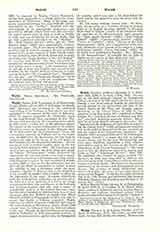

Walsh, THOMAS, b. in London, October, 1777; d. there, February 18, 1849. His father, an Irish merchant, having died during his infancy, Thomas was sent by his Protestant mother to the grammar school at St. Albans. Through his uncle, a priest of the London District, who obtained his admission to the college of St. Omer, his faith was saved. He shared in the imprisonment at Dourlens, and then continued his studies at Old Hall Green, where he was confirmed on December 19, 1795. When Dr. Stapleton was made Vicar Apostolic of the Midland District, he took Walsh, then deacon, as secretary (1801). Walsh continued with Bishop Milner as chaplain and missioner at Longbirch until October, 1804, when he was sent to Sedgley Park School as spiritual father. In 1808 he went to Oscott as vice-president and spiritual father and later he became president (1818-26). On May 1, 1825, he was consecrated titular Bishop of Cambysopolis, as coadjutor to Bishop Milner, whom he succeeded as vicar Apostolic on April 19, 1826. His rule of the district was marked by great progress, both spiritual and material. The College of St. Mary, Oscott, the two cathedrals of Birmingham and Nottingham, besides numerous churches and religious foundations, bear witness to the greatness of his ideals and his unwavering faith. From July, 1840, his jurisdiction was over the newly-constituted Central District; and on July 28, 1848, he was translated to the London District, against his own desire. But he was too old and infirm to take any active part in its affairs, and he left its administration in the hands of his coadjutor, Bishop Wiseman. Cardinal Barnabo reported the resolve of Propaganda that Walsh should be the first metropolitan of the new hierarchy, in the words “Whether living or dying he shall be the first Archbishop“, but death prevented the fulfillment. He is buried in St. Chad’s Cathedral, Birmingham.
J. L. WHITFIELD

